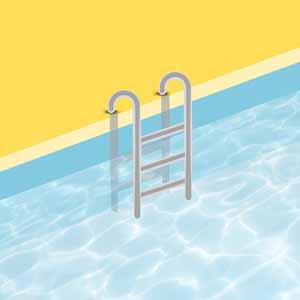Can aquatic exercises contribute to the improvement of the gait stereotype function in patients with Long COVID outcomes?

Accepted: 25 June 2022
HTML: 20
All claims expressed in this article are solely those of the authors and do not necessarily represent those of their affiliated organizations, or those of the publisher, the editors and the reviewers. Any product that may be evaluated in this article or claim that may be made by its manufacturer is not guaranteed or endorsed by the publisher.
Authors
A variety of rehabilitation programmes can be offered to Long COVID patients, specifically physical training. Indeed 90% of these patients reports impairments of verticalization, stability and spatial orientation, making difficult exercise in the gym. The aim of our study was to assess the effectiveness and safety of aquatic exercise techniques as part of a comprehensive rehabilitation program for patients with Long COVID. The first of a two-stage program involved development of aquatic exercises technique, which was evaluated in 12 patients with impaired upright posture control before and after exercising by "Habilect" video gait analysis system. During the second phase, effectiveness and safety of aqua exercises were tested in water pool as part of a comprehensive rehabilitation programme conducted in 23 patients with Long COVID outcomes. Physical examination, 6-minute step test, Euro-QL-5D questionnaire, Borg scale, laser Doppler flowmetry, cardiointervalography, and spirometry were performed before and after the aquatic exercises program. After the training with aquatic exercises, indices of deviations of the main body axes of the head and the body mass centre ameliorated, as well as direction of body movement vector decreased (p<0.05). This study demonstrated a statistically significant improvement in exercise tolerance in both groups, as measured by the 6-minute step test after rehabilitation. The comparison group averaged 236.7 metres [126; 380] (T=8, p=0.047) after the rehabilitation course and the intervention group averaged 233.71 metres [150; 320] (T=8.0, p=0.047). When tested with the Euro-QL-5D questionnaire, a post-treatment improvement was noted in the comparison group on the anxiety/depression subscale (3 [3;3] (T=0, p=0.043)). In the intervention group, laser Doppler flowmetry revealed a statistically significant increase in microcirculation (6.36 standard units after rehabilitation) [5.54; 8.17] (T=7.0, p=0.004), and a decrease of oxidative metabolism index of 6.89 standard units. [4.76; 6.96] (T=4.0, p=0.03). No serious adverse events were reported. In conclusion, the developed aquatic exercises technique seems to contribute to recovery of impaired upright posture and motor function, normalizing the walking pattern.
How to Cite
PAGEPress has chosen to apply the Creative Commons Attribution NonCommercial 4.0 International License (CC BY-NC 4.0) to all manuscripts to be published.

 https://doi.org/10.4081/ejtm.2022.10698
https://doi.org/10.4081/ejtm.2022.10698



